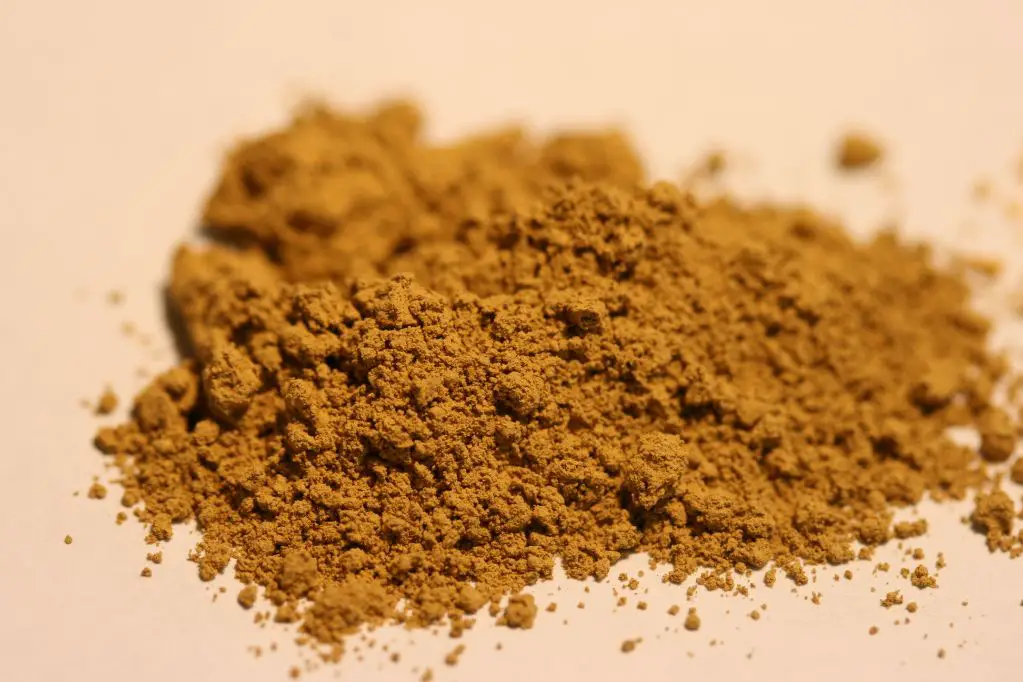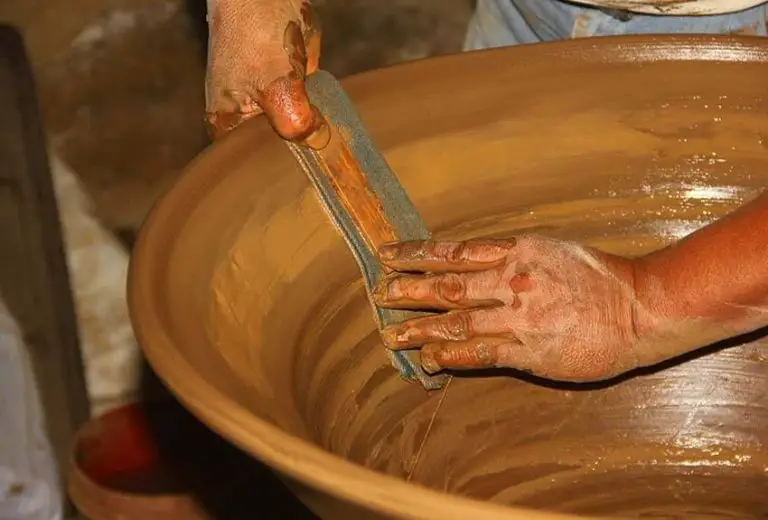Is Ochre Yellow The Same As Mustard?
Defining Ochre Yellow
Ochre yellow is a natural pigment made from a clay containing hydrated iron oxide that ranges in color from yellow to deep orange or brown. Ochre has been used as a pigment since prehistoric times and evidence of ochre pigment usage by early humans dates back over 250,000 years across Africa, Europe and Australia (Merriam-Webster). The earliest recorded use of yellow ochre pigments was found in cave paintings created during the Upper Paleolithic period around 30,000 years ago.
There are many variations in shade of ochre yellow depending on the composition of the clay, with major types including yellow ochre, gold ochre, red ochre, purple ochre, brown ochre. The hue can range from a pale lemon yellow to a dark golden orange. The intensity of the color depends on the amount of hydrated iron oxide in the clay, with more iron content producing deeper orange and red ochre tones (Collins Dictionary).
Ochre yellow pigment has been traditionally used in painting, ceramics, cave art, and murals. In modern times, ochre is also used for industrial coatings, concrete coloring, and other commercial applications.
Defining Mustard Yellow
Mustard yellow is a shade of yellow that originated as a dye made from the mustard plant. The earliest known use of mustard as a dye dates back to ancient Rome. Romans used mustard seeds to create a yellow-brown dye for coloring fabrics and military uniforms 1.
Over time, the mustard dye evolved into a brighter, more saturated yellow. By the 18th century, an artificial version of mustard yellow was created using a mix of dyes. This allowed for more vibrant and consistent shades of mustard yellow to be produced 2.
Today, mustard yellow encompasses a range of yellow shades from muted tan-yellows to bright egg yolks. It sits between the darker gold yellow and lighter lemon yellow on the color spectrum. Common uses for mustard yellow include paint colors, home furnishings, fashion and graphic design 3.
Comparing Color Values
When comparing ochre yellow and mustard yellow, there are a few key ways to evaluate the colors based on standard color models:
RGB Values
The RGB values for ochre yellow are R:237, G:201, B:80. The RGB values for mustard yellow are R:255, G:219, B:88.
This means ochre yellow has slightly less red and green, resulting in a more muted, earthy tone compared to the brighter mustard yellow.
CMYK Values
The CMYK values for ochre yellow are C:4%, M:16%, Y:67%, K:7%. The CMYK values for mustard yellow are C:0%, M:14%, Y:65%, K:0%.
The higher K (black) value in ochre yellow contributes to its darker, deeper tone compared to mustard yellow.
HEX Codes
The HEX code for ochre yellow is #EDC650. The HEX code for mustard yellow is #FFDB58.
This 6-character code is another way to distinguish the two similar shades. Mustard yellow has higher values, especially for red (FF vs ED), giving it a brighter look.
Color Swatches
Ochre Yellow
Mustard Yellow
Artistic Uses
Both ochre yellow and mustard yellow have a long history of being used in paintings and other artistic mediums. However, there are some key differences in how the two colors are utilized.
Ochre yellow is an earthy, natural yellow pigment that has been used since prehistoric times. It is made from a clay containing iron oxide and ranges in hue from yellow to brownish-orange. Ochre yellow has been found in Paleolithic cave paintings and ancient Egyptian tombs and murals. It creates a warm, organic aesthetic. Famous paintings using ochre yellow include Vincent Van Gogh’s ‘Sunflowers’ and Georges Seurat’s ‘A Sunday Afternoon on the Island of La Grande Jatte.’
Mustard yellow is a much brighter, more saturated yellow. As a synthetic pigment, it did not come into widespread artistic use until the 19th century. Mustard yellow creates a bold, attention-grabbing effect and is associated with energy and optimism. Famous mustard yellow paintings include ‘The Scream’ by Edvard Munch and ‘Irises’ by Vincent Van Gogh.
So while both colors fall in the yellow family, ochre has an earthy, muted quality from its natural origins while mustard is unnaturally vivid. This makes the two hues very distinct, despite similar yellow undertones.
Sources:
https://www.greatbigcanvas.com/category/yellow-wall-art/mustard-yellow/
https://www.etsy.com/market/mustard_yellow_art
Industrial Uses
Yellow ochre has been utilized in industrial applications for coloring textiles and other products. The pigment’s strong tinting strength made it useful as a dye for fabrics like linen, wool, and silk in the 18th and 19th centuries (Natural Pigments, 2022). When combined with binders, yellow ochre produced a durable and colorfast yellow dye for textiles that became popular for military uniforms, work clothes, tapestries, and draperies.
In addition to textile dyeing, yellow ochre has been employed for coloring a variety of commercial goods. The pigment provided a golden-yellow hue in products like linoleum, ceramics, cosmetics, rubber, and furniture stains (Workshops in France, 2021). Yellow ochre’s natural origin and minimal toxicity made it suitable for these applications before the development of synthetic yellow dyes. While synthetic dyes have replaced natural ochres in most modern uses, some traditional artisans and manufacturers continue to employ yellow ochre for its historical connections and aesthetic qualities.
Cultural Symbolism
Ochre yellow and mustard yellow have long held cultural meaning and symbolism across different societies. In many cultures, these earthy yellow tones symbolize life, fertility, and the sun.
In ancient Egyptian culture, yellow ochre was used in wall paintings and to color the clothing of revered figures. It represented eternal life and was associated with the skin color of gods. In China, yellow signifies royalty, prosperity, and power. In the West, yellow ochre and mustard evoke joy, optimism, enlightenment, and spirituality.
These shades are widely used in flags, company logos, and other iconography. The yellow in the Indian flag represents courage and sacrifice. McDonald’s iconic golden arches portray optimism and cheerfulness. The yellow ochre monastic robes of Buddhist monks signify their renunciation of worldly concerns.
Overall, ochre yellow and mustard yellow have enduring symbolic meaning in human culture. Their warm, earthy essence represents the sun, fertility, courage, spirituality, prosperity, royalty, and enlightenment across civilizations.
Geographic Origins
Ochre pigment is found in many parts of the world, especially where iron oxides occur in rock formations. Some of the earliest known ochre mines were in Africa, including sites in South Africa dating back over 160,000 years. Ochre was also mined extensively in Australia by Aboriginal people for at least 40,000 years. Today, major deposits of natural ochre are found in France, Cyprus, Romania, Siberia, India and other locations.

According to https://www.naturalpigments.com/artist-materials/yellow-ochre-a-comprehensive-guide, some high quality yellow ochre originates in Italy and France where it is traditionally sourced through mining. The ochre deposits in Roussillon, France have been used since prehistoric times.
Mustard plants originated in the Himalayan region of India over 5,000 years ago. Some of the earliest recorded uses of mustard seeds come from ancient Sanskrit texts written in India. Mustard was later spread around the world as a popular spice and food ingredient. Major mustard growing regions today include Canada, Nepal, Myanmar, Ukraine and the United Kingdom.
Health Impact
Yellow mustard contains compounds like glucosinolates and phenethyl isothiocyanate that can have both positive and negative health effects depending on the amount consumed. In moderation, the isothiocyanates in mustard may provide antioxidant, anti-inflammatory, and cancer-fighting benefits. However, very high doses can potentially have toxic effects.
Traditionally, mustard seed and its oil have been used topically and internally in Ayurvedic and Chinese medicine to stimulate circulation, aid digestion, and treat respiratory congestion. When consumed in normal culinary amounts, yellow mustard is generally recognized as safe and provides nutritional benefits. However, concentrated mustard oil taken internally in large quantities has been linked to toxicity resulting in cardiac, gastrointestinal, and neurological symptoms.
Overall, yellow mustard can be part of a healthy diet, but should be consumed in moderation. Very high intakes from concentrated sources may potentially cause adverse effects due to compounds that are toxic at high doses.
Environmental Issues
The mining of ochre for use as a pigment can raise environmental concerns when not done sustainably. Ochre is typically mined from open pits, which can lead to land disturbance and habitat destruction if not properly managed. Rehabilitation of ochre mining sites is important to prevent long-term environmental damage.
However, ochre can also be sourced sustainably. Some Aboriginal groups in Australia have sustainably mined ochre for thousands of years. When mining is restricted to small excavations that are later backfilled, ochre can be extracted with minimal environmental impact.
For mustard dye, organic options are available that are less harmful than synthetic dyes. Organic mustard dye is made from mustard plant materials like seeds, leaves, and stems. This type of natural dye has a reduced environmental footprint compared to synthetic dyes which can produce pollutants. Organic mustard dye is biodegradable and less toxic. It provides a more eco-friendly alternative for textile dyeing.
Sources:
[1] https://study.com/academy/lesson/ochre-history-pigments-uses-color.html
[2] https://www.naturalpigments.com/artist-materials/yellow-ochre-a-comprehensive-guide
Conclusion
After comparing ochre yellow and mustard yellow, we find that while these colors share some similarities, there are distinct differences that make them unique in their own right.
Ochre yellow is an earthy, golden yellow that leans towards brown. It has traditionally been made from natural clays and minerals. Mustard yellow is brighter and more vibrant. It is named after the popular condiment made from mustard seeds. While both are shades of yellow, ochre has more muted warmth while mustard pops with energy.
In terms of usage, ochre and mustard yellow can usually substitute for one another in artwork to achieve slightly different effects. However, mustard yellow has more industrial applications, such as use in safety gear, while ochre is preferred for its natural origins. Overall, context and desired effect will determine which shade of yellow is most appropriate.
By examining the nuances between these similar colors, we gain an appreciation for the wide spectrum that exists even within a single hue. With an understanding of their unique qualities and uses, both ochre and mustard yellow can be applied effectively.


